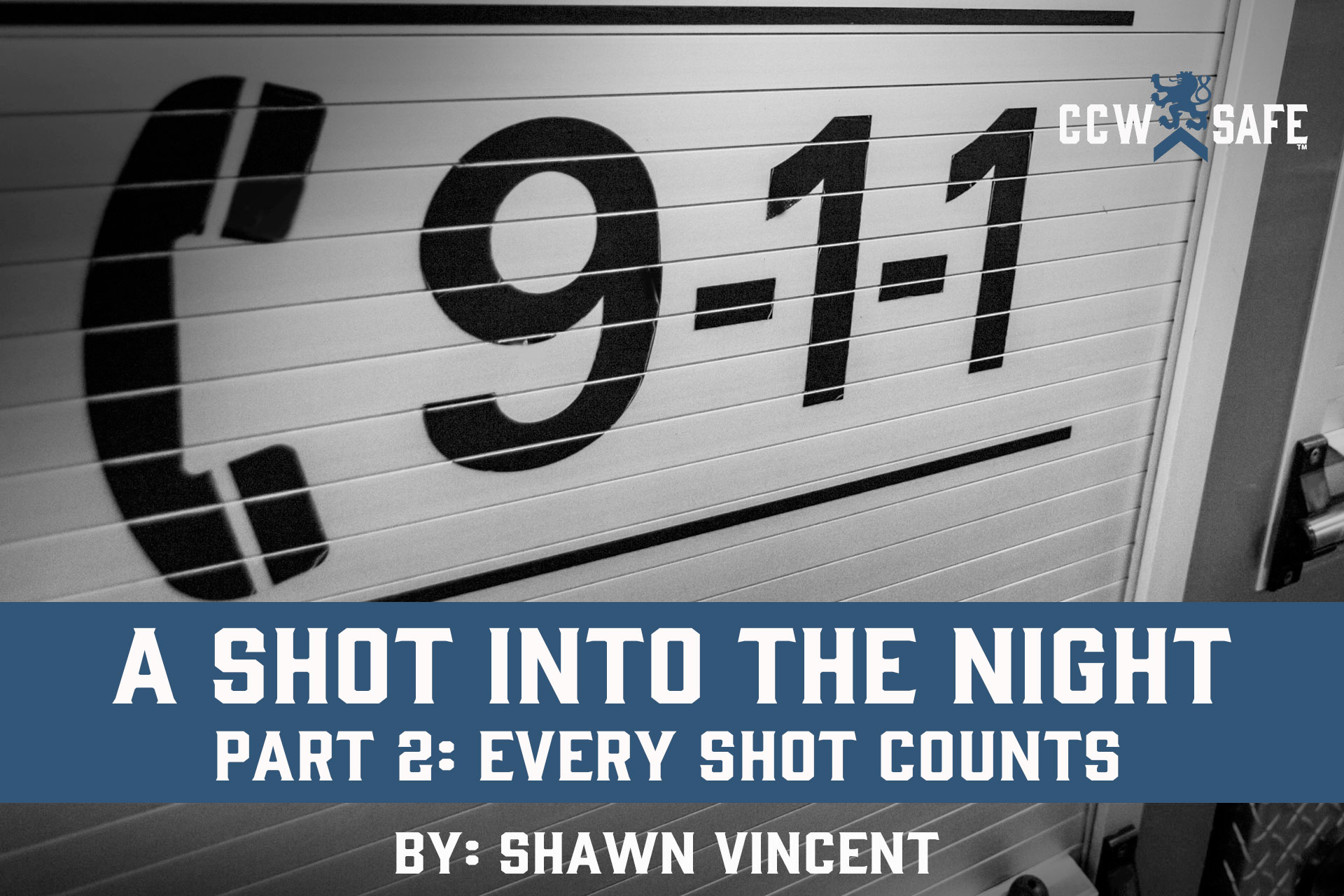
Posted on February 28, 2020
A Shot into the Night Part 2: Every Shot Counts
A Shot into the Night
Part 2: Every Shot Counts
Last September, James Meyer of Dallas, Texas scared off a burglar with a single pistol shot. A little after 5 a.m., Meyer awoke to sounds in his backyard. Through a window, he saw a man dressed in black trying to force entry into his storage shed with a pickax. According to the police affidavit, Meyer said he grabbed his pistol, chambered a round, and confronted the man, warning him not to come closer. When the intruder took several steps towards him, Meyer fired, and the intruder dropped the pickax and ran away.
If that had been the end of the encounter, it would have all the markings of a justifiable self-defense shooting — there was an intruder, in the process of committing a felony, armed and able to cause imminent harm. But that wasn’t the end of the encounter. Meyer admitted to police that he fired an additional shot “into the night” in the direction of the retreating intruder. The police affidavit reads: “From the suspect’s accounts, the threat of serious bodily injury against him was over when the complainant dropped the pickax and ran off.”
It turns out the second shot struck the fleeing intruder in the back of the neck. Police found him face down, dead on the ground in the park adjacent to Meyer’s property. Meyer was arrested and charged with murder.
In a self-defense shooting, we frequently say that “every shot counts.” It means that, while the first shot may meet the criteria for justifiable use of force, the last shot might not.
We have explored the case of Michael Dunn, the shooter from the “loud music” case out of Jacksonville, Florida. Dunn pulled into a convenient store parking lot, and while his fiance went inside to buy chips and wine, he confronted the teens in the car next to him over their loud rap music. When he asked them to turn the music down, 17-year-old Jordan Davis became enraged and started shouting and making threats. Dunn claims to have seen Davis produce an object that looked like the barrel of a shotgun (police found no such object), and so Dunn retrieved his pistol from the glove compartment and fired three bursts of bullets at the teens’ vehicle.
Dunn’s first burst struck Davis and killed him. The second burst became lodged in the passenger door as the vehicle backed away. Dunn fired the final burst into the back of the teen’s retreating vehicle. At trial, a jury failed to reach a verdict for the killing of Jordan Davis, but they easily convicted Dunn of three counts of attempted murder for firing at the retreating vehilce. Some on the jury felt the first shots were justified, but everyone agreed the final shots were not.
We also wrote about the case of Jerome Ersland, the Oklahoma City pharmacist who fought off a pair of armed robbers who tried to hold up his store. One assailant escaped while the other was struck multiple times and died in a pool of his own blood on the pharmacy’s floor. At first, Ersland was treated as a hero for thwarting a violent crime, but that changed once detectives examined the security footage of the shooting. They saw that during a first round of shots, the assailant was struck in the head and fell incapacitated to the floor. Ersland then gave chase to the second man. When he returned, he stepped over the body of the robber he had shot, retrieved a second weapon, and fired several more rounds into the motionless body. Ersland’s first shots were justified; his last shots were murder.
In Little Falls, Minnesota, Byron David Smith had taken to wearing his pistol around the house for fear or the rising crime in the neighborhood where the retiree lived alone. On Thanksgiving Day 2012, he detected two teens casing his home. He retreated to his basement and waited, armed with a rifle and a pistol. The teens broke in, and one at a time, they descended down the stairs to the basement. Smith shot them, first in the legs, incapacitating them, then, when they were lying at the bottom of the stairs, he fired a final round into their heads. As a homeowner defending his property, the first shots may very well have been justified. The final shots, however, were executions.
Back in Dallas, these three cases may provide a different perspective on James Meyer’s shot “into the night.” Was this final shot more like Michael Dunn firing at the retreating vehicle? Or was it more like the revenge shots fired by Jerome Earsland and Byron David Smith? The single shot in the back of the neck could suggest it was more than just a blind shot in the dark.
The lesson for concealed carriers is that, in a self-defense shooting, every shot counts. James Meyer was very likely perfectly justified in firing the first shot that scared off the intruder. But once the culprit dropped the weapon and ran, the imminent threat vanished, and the window of justification closed. Law enforcement counted the final shot that struck and killed the fleeing intruder as murder. Don’t get swept up in the emotion of a life-threatening encounter. Don’t let fear morph into anger. Don’t let a self-defense shooting transform into murder.
 |
SHAWN VINCENT- LITIGATION CONSULTANTShawn Vincent is a litigation consultant who helps select juries in self-defense cases, and he manages public interest of high-profile legal matters. If you have any questions for Shawn, or would like more articles like this, let us know belo |